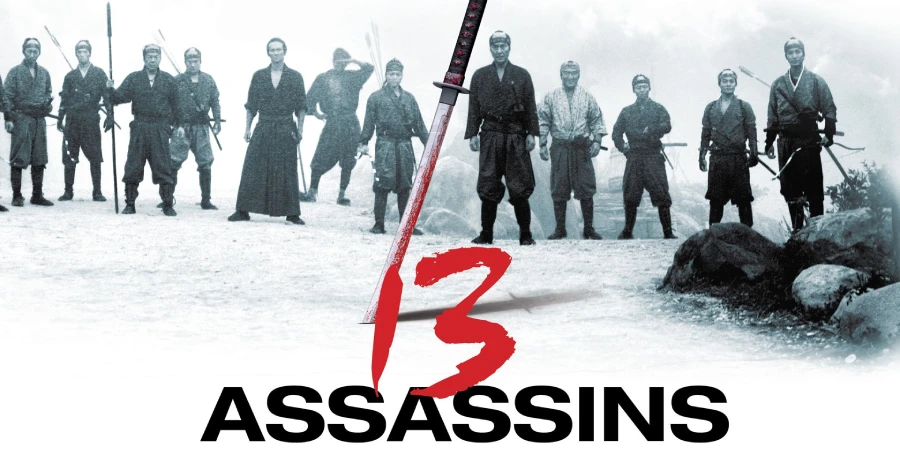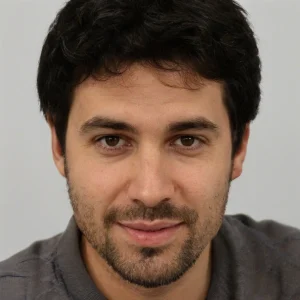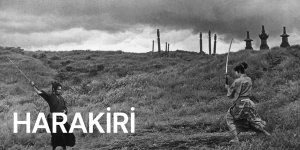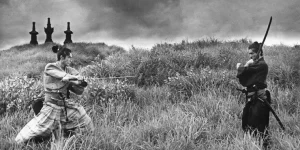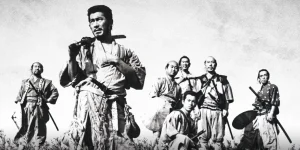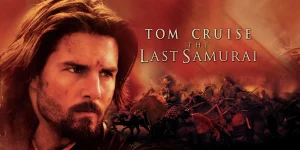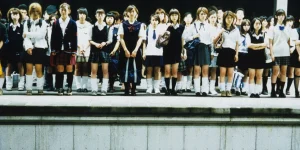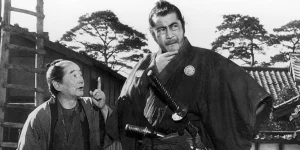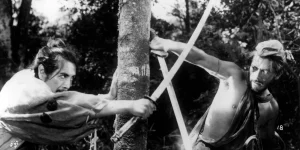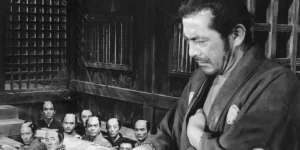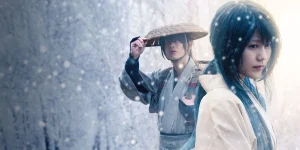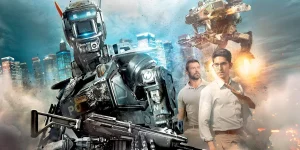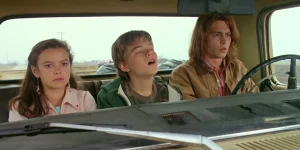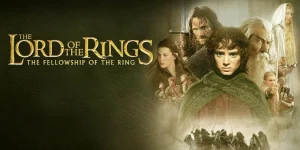13 Assassins (2010), directed by Takashi Miike, is a brutal, elegant, and suspense-filled samurai epic that blends classic storytelling with modern filmmaking flair. It is a remake of the 1963 film of the same name and offers a masterclass in tension-building, choreography, and honor-driven storytelling. Set during Japan’s fading feudal era, it tells the story of a group of samurai on a suicide mission to stop a sadistic lord from rising to power.
Table of Contents
ToggleDetailed Summary
Opening: The Rot at the Heart of the Shogunate
The film opens in 1844 during the Edo period. We quickly learn that Lord Naritsugu Matsudaira, half-brother of the Shogun and next in line for a seat on the Shogunate Council, is a cruel, sadistic tyrant. He rapes, murders, mutilates, and terrorizes people with impunity, protected by his high-ranking bloodline. A scene of ritual suicide by one of his victims’ relatives sets the bleak tone early.
Senior government official Sir Doi Toshitsura, aware that Naritsugu’s political ascension could destroy Japan’s fragile peace, secretly commissions aging samurai Shinzaemon Shimada to assassinate the lord before he gains power. Shinzaemon, seeing this as a chance to restore honor to the warrior class and himself, accepts.
The Recruitment: Assembling the Assassins
Shinzaemon gathers a team of 11 trusted samurai, including his nephew Shinrokurō, a skilled but disillusioned ronin. Each recruit joins for different reasons—loyalty, guilt, purpose—but all understand that the mission is likely a suicide run. Along the way, they’re joined by a hunter and wildman named Kiga Koyata, who adds humor and unpredictability to the group.
The Plan: Turning a Village into a Fortress
Knowing that Naritsugu will soon be traveling with a heavily armed retinue, Shinzaemon plans to ambush him in the remote village of Ochiai. They convert the village into a deathtrap—rigging buildings with explosives, creating false paths, and prepping weapons. Their goal: lure Naritsugu into the village and kill him before reinforcements can arrive.
Meanwhile, Naritsugu’s loyal and honorable retainer Hanbei, a former comrade of Shinzaemon, becomes aware of the plot. Despite knowing Naritsugu’s crimes, Hanbei remains loyal, believing in the code of feudal duty. His conviction contrasts sharply with the assassins’ belief in justice over blind loyalty.
The Battle: Chaos and Carnage
The film’s final 45 minutes are a prolonged, intense, masterfully directed battle sequence. Naritsugu arrives in Ochiai with a force of over 200 soldiers, vastly outnumbering the assassins. But the samurai spring their ambush.
What follows is a relentless war of attrition: houses explode, streets run with blood, and the samurai fight like demons. Each death is brutal and personal. The assassins fall one by one, dying valiantly and inflicting massive casualties. Koyata, seemingly immortal, survives near-fatal wounds with feral resilience.
The battle is exhausting, dirty, and gloriously cinematic—a contrast to the romanticized version of samurai often seen in Western cinema. Miike grounds it in physicality and desperation, portraying war not as honorable but necessary and costly.
Movie Ending
By the end of the battle, only Shinzaemon, Shinrokurō, and Koyata remain alive. Shinzaemon confronts Naritsugu, who has finally seen battle and been wounded. Far from being humbled, Naritsugu is delighted by the chaos—laughing, praising war, and expressing anticipation for the suffering he can inflict when he gains power. This moment cements just how dangerous he truly is.
Shinzaemon kills Naritsugu with a final stroke, but is mortally wounded. His death is quiet and proud, knowing he has saved his country from tyranny. Koyata, bloodied but full of life, helps the only other survivor, Shinrokurō, to his feet.
In the film’s final scene, Shinrokurō, once a cynical samurai uninterested in loyalty or honor, walks away from the battlefield changed. A voiceover tells us that Naritsugu’s death was covered up by the shogunate—the assassins’ actions kept secret to maintain order. The samurai fade into obscurity, but their actions prevented a national tragedy.
Are There Post-Credits Scenes?
No, 13 Assassins does not have a post-credits scene. The ending is final, somber, and purposefully reflective. There’s no setup for sequels—just silence after the storm.
Type of Movie
This is a historical samurai action-drama. It’s also a political thriller, a moral fable, and, in its final act, an all-out action spectacle. While rooted in Japanese history and Bushido code, the themes—power, justice, sacrifice—are universal.
Cast
- Kōji Yakusho as Shinzaemon Shimada
- Takayuki Yamada as Shinrokurō Shimada
- Gorō Inagaki as Lord Naritsugu Matsudaira
- Masachika Ichimura as Sir Doi Toshitsura
- Yūsuke Iseya as Kiga Koyata
- Mikijirō Hira as Hanbei
- Ikki Sawamura, Arata Furuta, and others round out the assassins.
Film Music and Composer
The score was composed by Kōji Endō, frequent collaborator of Miike. The music is sparse but effective—traditional Japanese instruments underscore emotional and moral beats, while heavier percussion supports the action sequences.
Filming Locations
The film was shot in various rural and mountainous regions of Kumamoto Prefecture and Okayama Prefecture, Japan. The village of Ochiai was constructed specifically for the film in a forested area to enable full-scale, destructible set-pieces during the final battle. These natural settings enhanced authenticity, grounding the stylized violence in real geography.
Awards and Nominations
- Japan Academy Prize nominations: Best Picture, Best Director, Best Supporting Actor (Yakusho), Best Cinematography
- Asian Film Awards: Best Production Design
- Fantastic Fest (USA): Best Director
While it wasn’t a major Western awards contender, it gained strong critical acclaim and cult status internationally.
Behind the Scenes Insights
- Takashi Miike, known for his extreme and surreal films (Audition, Ichi the Killer), approached this movie with restraint and reverence—for the most part.
- The final battle took over 2 weeks to shoot, with up to 300 extras on set each day.
- Miike used minimal CGI, relying on practical effects, real stuntwork, and live explosions.
- The character of Koyata was inspired by Kikuchiyo from Seven Samurai and adds a mystical, almost supernatural flavor to the story.
- Many of the actors underwent intense swordsmanship training, led by a martial arts choreographer.
Inspirations and References
- Based on the 1963 film 13 Assassins by Eiichi Kudō.
- The screenplay draws from real historical tensions during Japan’s Edo period, though Naritsugu is a fictionalized version of various corrupt nobles from the time.
- Thematically, the film pays tribute to Akira Kurosawa‘s Seven Samurai, especially in its focus on sacrifice and duty.
Alternate Endings and Deleted Scenes
No major alternate endings have been publicly revealed, but some character scenes (including more of the assassins’ backstories) were trimmed for pacing. Early drafts reportedly featured a less ambiguous fate for Koyata, but Miike preferred to keep his character mythic and mysterious.
Book Adaptations and Differences
There is no novel that the film is directly based on, though the screenplay was published in Japan. However, the 1963 film and the historical context served as its foundation.
Memorable Scenes and Quotes
Key Scenes
- The haunting early scene where a mutilated woman testifies with a brush held in her mouth.
- Shinzaemon’s calm acceptance of the suicide mission, shaving his head in preparation.
- The explosive start to the final battle: arrows, traps, collapsing buildings.
- Naritsugu laughing in the middle of the carnage, thrilled by the violence.
- Shinzaemon’s death after finally completing his mission.
Iconic Quotes
- “Let’s make this a glorious end.” – Shinzaemon
- “I’ve never felt so alive.” – Naritsugu, during the battle
- “A samurai without a master is still a samurai.” – Shinrokurō
- “This is justice.” – Shinzaemon, before striking the final blow
Easter Eggs and Hidden Details
- Koyata references Tengu, mythical creatures in Japanese folklore—implying he might not be fully human.
- The number of assassins and their mission evokes Seven Samurai and The Dirty Dozen, blending East and West.
- Miike uses long, static shots at key emotional moments, contrasting with handheld chaos in the battle.
Trivia
- The movie was banned or heavily censored in several countries due to violence.
- Miike made this as part of his effort to prove he could make a “mainstream” film—ironically, it’s still one of his bloodiest.
- The sword choreography involved real metal swords for close-ups, adding risk to each scene.
- Koyata was originally supposed to die, but test audiences loved him too much.
Why Watch?
If you’re a fan of epic action, moral dilemmas, and uncompromising direction, 13 Assassins is a must-watch. It’s one of the best modern samurai films—a blend of tragedy, tension, and thrill. Whether you’re into intense battle sequences or stories of quiet resistance against injustice, this film delivers.
Director’s Other Movies
- Audition (1999)
- Ichi the Killer (2001)
- Hara-Kiri: Death of a Samurai (2011)
- Blade of the Immortal (2017)
- First Love (2019)
Recommended Films for Fans
- Seven Samurai (1954)
- The Sword of Doom (1966)
- The Twilight Samurai (2002)
- Harakiri (1962)
- Rurouni Kenshin Part I: Origins (2012)

